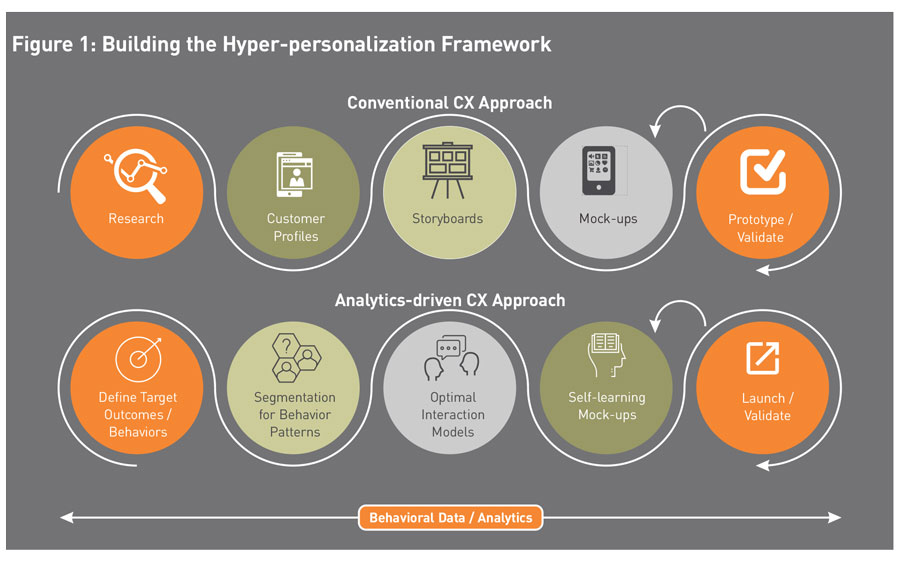Hyper-Personalization Examples
Hyper-personalization demands innovative tactics and modern platforms to meet customer and organizational requirements. Companies need to collect, analyze, and transform data into actionable insights that will support overall business goals.
A number of legacy systems can be modernized to support this, but they fail to provide the capability to work with both digital and voice channels. This often leads to proprietary solutions that require patching together applications, which makes maintenance more challenging and less ideal.
Still, there are several organizations that have embraced the hyper-personalized approach with the help of digital adoption platforms and composability. Below are a few examples.
Hyper-Personalization in Banking
Capital One is a US bank that went all-in with hyper-personalization, leveraging conversational AI to create the bank’s intelligent assistant Eno. Through this innovative chatbot, Capital One is able to send personalized notifications, offers, and assist with managing personal finances and other simple tasks.
What makes their approach innovative is that they partnered with retailers to provide geo-specific prompts, featuring offers when a customer is close or within the location of these partners.
Hyper-Personalization in Retail
Amazon is a retail giant that never lags behind when it comes to innovation. It has been taking the hyper-personalization approach for years, with access to data that includes customers’ full names, category browsing habits, purchase history, average spend amount, and brand affinity—to name a few.
With this data, Amazon creates contextual email and push messages that highlight features and deals relevant to specific customers. The recommendation algorithm Amazon uses is referred to as “item-to-item collaborative filtering,” which recommends products based on the following:
- Customers’ purchase history
- Items in a customer’s shopping cart
- Items a customer has liked or rated
- Items liked and purchased by other customers
Hyper-Personalization in Healthcare
Avia Healthcare collects and analyzes customer data to create hyper-personalized experiences or develop an “n-of-1” view of each patient. This view looks at each patient individually to determine definitively if a specific treatment works for a particular individual.
This is in contrast to looking at patients as part of a segment or demographic. Through analyzing patient data, Avia Healthcare is able to provide its customers with marketing communications that are tailored to their specific needs.
The company’s approach can be broken down into four tiers:
- Tier 1: Basic preferences and needs
- Tier 2: Proactive communication
- Tier 3: Personalized navigation
- Tier 4: Tailored care delivery
Hyper-Personalization in Marketing
Starbucks is known for its marketing prowess, and it isn’t one to hold back when it comes to hyper-personalization. With its mobile app, the brand is able to offer unique experiences to each customer based on their preferences, previous app activity, and recent purchases.
Starbucks uses an AI-based algorithm to push personalized food and beverage suggestions and has over 400,000 variants of hyper-personalized messages promoting compelling offers relevant to each customer.
